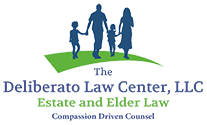It goes without saying that growing old is hard. Not only must those entering this stage of life navigate the enormous shifts provoked by retirement, changing family roles, and the loss of lifelong companions, but often times are also faced with medical challenges that imply tricky insurance and financial issues. Even the luckiest among us will most likely need to consider nursing care at some point in our lives. Medicaid offers financial assistance to defray the considerable associated cost but comes with stringent needs-based requirements and transfer of asset rules that taxpayers and their advisors need to consider. In an effort to lighten the burden of navigating this territory, we answer some of the most frequent questions about Medicaid planning and asset protection below.
How is Medicare different from Medicaid in Providing for Nursing Home Care?
While Medicaid eligibility for coverage of nursing care depends upon an individual’s financial ability, Medicare is a federal insurance program for those aged 65 and older who pay for hospital costs through deductibles and who pay premiums for non-hospital expenses. On the condition that an individual is hospitalized for at least three days, Medicare Part A will cover the first 20 days in a Skilled Nursing Facility (SNF). Provided that the below requirements are met, Medicare will also cover the succeeding 80s days in an SNF after receipt of copayment:
• The individual must enter the SNF within 30 days after the hospital stay.
• The care must be skilled (i.e., not merely custodial) and based on the same condition that caused the hospitalization.
• The care must be under a physician’s orders.
Medicare’s maximum coverage of 100 days hinges upon demonstrating that the rehabilitative care will improve the individual’s condition.
What Assets Are Considered in Determining Medicaid Eligibility?
This varies from state to state and may be subject to change. As of 2018, Ohio uses two parameters to assess one’s needs. If single, the amount of the applicant’s assets that can be retained is $2,000.00 in Ohio, along with any exempt assets. If the institutionalized recipient has a spouse living at home (community spouse), the Medicaid spousal impoverishment provision protects a certain amount of the couple’s combined assets. At a minimum, $25,284 is allowed and the maximum is $126,420, representing one-half of the couple’s combined assets, assuming they total at least $247,200. The combination of the single and maximum community spousal allowances is referred to as the Joint Spousal Allowance (JSA) and totals $138,750 ($123,600 + $15,150), which, along with any exempt assets, is not countable for Medicaid.
How Do the Different Types of Trusts Affect Medicaid Eligibility?
First, if you’ve set up a trust, congratulations! You’re a minority among U.S. adults. As you likely know, a married couple may choose between two types of living trusts. A revocable trust means the creators can access the principal at any time and hence, assets are considered an available resource in Medicaid’s needs assessment. Here, a creditor (including Medicaid) takes on the role of a beneficiary and may obtain whatever benefits the individual has made accessible under the plan. By contrast, an irrevocable living trust (ILT) provides limited benefits to the creators. Revenue generated is available to Medicaid but the underlying principal cannot be touched.
The testamentary trust works differently from either of the living trust options. Created upon the first spouse’s death, and derived from the language of the individual’s will or in the wording of one of the two living trusts, this option only makes those benefits that are required to be paid to the surviving spouse—but not those that are discretionary—available to Medicaid.
What Planning Options Exist Regarding Personal Residences?
It may be that both spouses enter a nursing home. In this scenario, it is important to protect real property from being used as a personal residence by Medicaid. One strategy is to enact a life estate arrangement, in which an individual executes a deed that reserves and retains the life use of the property while designating, for example, any children as remaindermen (or women) who will become titleholders after both parents are deceased. Another approach is to create an irrevocable living Medicaid asset protection trust (MAPT), in which the residence is retitled to the trust, providing life use of the realty for trust creators who are not trustees.
While these may be some of the most frequently asked questions about Medicaid planning and asset protection, the list is hardly exhaustive. Each case comes with nuances and there are many considerations that extend beyond the scope of the current article. If you are arriving at a stage where Medicaid planning is on the horizon, be sure to speak with an elder law attorney about your unique situation.




